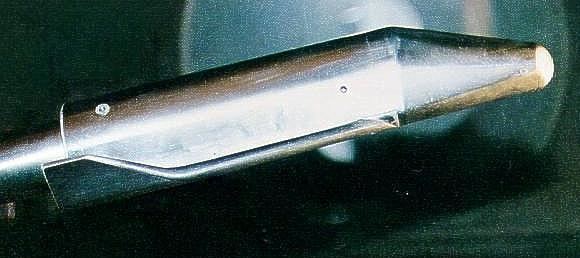Length 32 m Payload 4 t | Mass 140 t | |
 | ||
Role Reusable launch vehicle space plane project | ||
Project 921-3 is Manned Spacecraft sub-system of Project 921. The term 921-3 is often used for the Chinese space shuttle program.
Contents
History
The Chinese National Manned Space Program was given the designation of Project 921 in 1992. This broad project was divided into three phases: 921/1 to launch a manned mission by 2002 in a craft that became the Shenzhou, the Project 921/2 temporary space station by 2010, and the 921/3 permanent space station by 2020. Care must be taken not to confuse the 3 phases of Project 921 with its 7 sub-systems (921-1, 921-2 ... 921-7).
Early planning of Project 921 included 6 different proposals for a manned space transportation system. Five of these proposals were of a space-earth transportation system using a delta winged orbiter. By 1990, the proposal for the Soyuz-like capsule Shenzhou had won out.
Some small models for a space plane were made public, but the concept was rejected in favor of a Soyuz-like capsule which became Shenzhou. Concepts for a space shuttle now are only academic. There is no known Chinese government support beyond very basic research for a space plane.
Photographs of a two-seat spaceplane simulator were published after 1980, probably belonging to a Chinese Dynasoar-like vehicle. Reports of the existence of a wind tunnel model have continued since then.
869 Project
After 1986 the Air Ministry starts its 869 Project regarding space plane concepts. Up to 1990, the several space-shuttle proposals studied were:
Shenlong (Divine Dragon) Test Platform
The latest academic models shown in 2000, reveal a delta winged spaceplane with a single vertical stabilizer, equipped with three high-expansion engines. Presuming a seating arrangement of two crew members siting side-by-side in the cockpit, dimensions could be very roughly estimated as a wingspan of 8 m, a length of 12 m and a total mass of 12 tonnes. This is within the payload capability of the Chinese CZ-2E(A) or Type A launch vehicles.
HTS Maglev Launch Assist Technology
During the 2006 Zhuhai Airshow, pictures of a totally new space vehicle developed by the Beijing University of Aeronautics and Astronautics(北京航空航天大学) were published.
This new Chinese space shuttle was based on the HTS (High Temperature Superconductor) Maglev Launch Assist Technology for Space Flight Vehicle (航天运载器高温超导磁悬浮助推发射技术), with an initial take off speed of 1000 km/h.
Reusable launch vehicle Space Plane
Concept proposed by China Academy of Launch Vehicle Technology. A 140 tons, 32m length orbiter launched atop a Long March 5 rocket with a payload of 7 tons.
Shenlong Space Plane
Images of an aerodynamic scaled model, ready to be launched from under the fuselage of a H-6K bomber, were first published in the Chinese media on 11 December 2007. Code named Project 863-706, the Chinese name of this spacecraft was revealed as “神龙”空天飞机 or "Shenlong Space Plane", meaning Divine Dragon in Mandarin. These images, possibly taken in late 2005, show the vehicle's black reentry heat shielding, indicating a reusable design, and its engine assembly. First sub-orbital flight of the Shenlong reportedly took place on 8 January 2011.
It has been proposed that the vehicle is fitted with a Russian-designed D-30K turbofan engine, which would likely not provide enough power to reach Low Earth orbit. A larger Shenlong model, however, would be capable of carrying a payload to orbit. Analysts had previously reported on a late 2006 Chinese test flight of what is believed to be a scramjet demonstrator, possibly related to the Shenlong vehicle.
Earlier, images of the High-enthalpy Shock Waves Laboratory wind tunnel of the CAS Key Laboratory of high-temperature gas dynamics (LHD) were published in the Chinese media. Test with speed up to Mach 20 where reached around 2001.
As of 2007, the CAS academician Zhuang Fenggan (莊逢甘) said that a first test flight of the spaceplane would be conducted during the "Eleventh Five-Year Plan", meaning from 2006 to 2010.
Hypersonic Vehicle
According to 'informal sources', another hypersonic vehicle has been tested, which is equivalent to the X-43.
